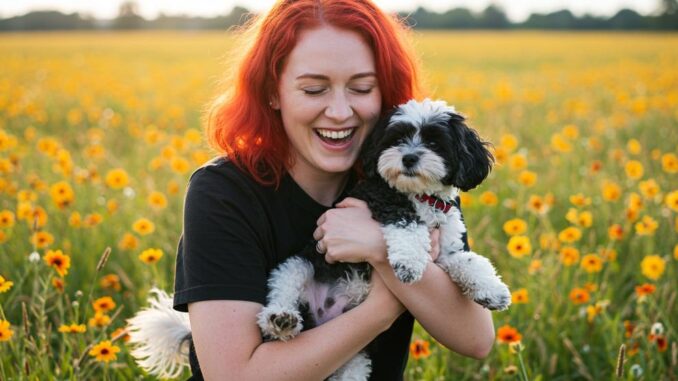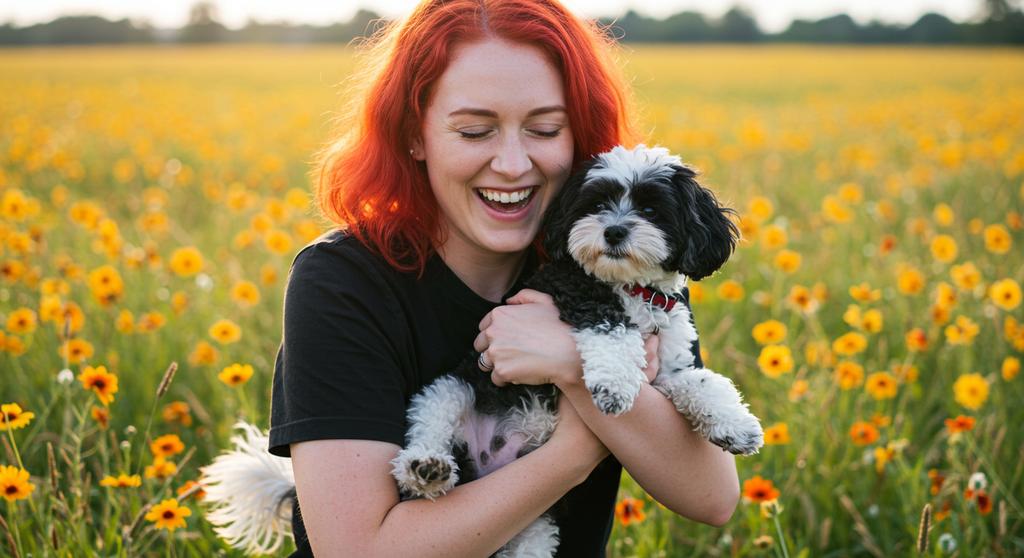
Ways to Make Your Dog Feel Loved: Dogs are not just pets they’re family. Whether they’re wagging their tails at the door, snuggling with you on the couch, or joining you on outdoor adventures, dogs thrive on love and companionship.

But love isn’t just about belly rubs and treats it’s also about time, trust, communication, and care. In this guide, we’ll explore seven thoughtful, science-backed ways to show your dog how much they mean to you, deepening your bond in the process.
7 Ways to Make Your Dog Feel Loved
1. Spend Quality Time Together Every Day
Time is one of the greatest gifts you can give your dog. Your presence alone brings comfort, reassurance, and joy. Whether it’s a morning walk, a quiet moment on the couch, or a game of fetch, these daily rituals strengthen the emotional connection between you and your pup.
Ideas for Quality Time:
- Go on a different walking route to stimulate their curiosity.
- Have a “cuddle session” while watching TV or reading.
- Create a mini agility course in your backyard.
- Explore dog-friendly cafes or parks together.
Why it matters: Dogs are social animals who thrive in environments where they feel included. Your attention makes them feel secure and valued.
2. Use Positive Reinforcement and Praise
Just like people, dogs respond best to encouragement rather than punishment. When your dog behaves well or learns a new trick, rewarding them with a treat, toy, or verbal praise communicates love and helps reinforce good behavior.
Positive Reinforcement Tips:
- Use a happy, excited tone when offering praise.
- Keep training sessions short (5–10 minutes) and fun.
- Use high-value treats your dog doesn’t get often.
- Don’t delay your rewards—dogs learn best with immediate feedback.
Why it matters: Dogs associate your voice and touch with affection. Positive reinforcement not only builds trust but also fosters confidence in your pup.
3. Grooming as a Bonding Experience
Brushing your dog’s coat, cleaning their ears, or giving them a gentle bath isn’t just about hygiene—it’s also a chance to build trust and physical intimacy. Many dogs learn to love grooming when it’s done in a calm, patient manner.
Make Grooming Enjoyable:
- Use soft brushes and gentle strokes.
- Introduce grooming tools gradually if your dog is nervous.
- Offer treats or praise during and after grooming.
- Massage their body gently to relax them.
Why it matters: Grooming creates moments of calm and trust, helping dogs feel secure in your care. It also helps you spot potential health issues early.
4. Talk to Your Dog
It may feel silly, but dogs love hearing your voice. While they may not understand every word, they recognize your tone, rhythm, and emotion. Talking to your dog throughout the day helps them feel involved and connected.
What to Say:
- Use their name often—it helps them feel recognized.
- Narrate your day or ask them questions with an upbeat tone.
- Offer reassurance when they’re anxious or confused.
Why it matters: Studies show that dogs understand emotional cues and some human words. A friendly, gentle voice comforts them and strengthens your relationship.
READ ALSO: Is Your Cat Overweight? How to Maintain a Healthy Weight for Your Cat
5. Respect Their Boundaries
Loving your dog also means honoring their space. Just like humans, dogs have moods and preferences. Pay attention to body language: a tucked tail, flattened ears, or turning away may indicate they need a break.
Ways to Show Respect:
- Don’t force interactions with strangers or other pets.
- Let them sniff and explore at their own pace on walks.
- Allow them alone time if they retreat to their bed or crate.
- Never punish growling—it’s a warning, not misbehavior.
Why it matters: Respecting boundaries builds trust. It shows your dog that their feelings matter and that you’re a safe person to be around.
6. Provide Mental Stimulation
Love also means keeping your dog mentally engaged. Boredom can lead to anxiety or destructive behaviors. Games, puzzles, and new experiences challenge your dog’s brain and keep life exciting.
Mental Enrichment Ideas:
- Use food puzzles or treat-dispensing toys.
- Hide treats around the house for a scent scavenger hunt.
- Teach new tricks like “spin,” “shake,” or “roll over.”
- Rotate their toys weekly to keep them novel.
Why it matters: A mentally stimulated dog is a happy, well-adjusted dog. Providing enrichment shows you’re attentive to their emotional and cognitive needs.
7. Be Consistent and Reliable
Dogs thrive on routine and consistency. Knowing what to expect helps them feel safe. Whether it’s feeding times, bedtime routines, or your tone of voice, being predictable creates a strong emotional foundation.
Routines that Show Love:
- Feed and walk them at regular times.
- Use the same cues and commands.
- Follow through with boundaries kindly (e.g., not letting them beg one day and scolding them the next).
- Keep promises—if you say “walk,” follow through.
Why it matters: Dogs love structure because it creates emotional security. When your actions align with your words, they know they can count on you.
Bonus Tip: Learn Your Dog’s Love Language
Not every dog shows affection in the same way. Some love cuddles, others prefer play or just being near you. Observe how your dog responds to different types of attention.
Common Dog Love Languages:
- Physical touch: Enjoys being petted or hugged
- Quality time: Wants to follow you everywhere
- Play: Thrives on fetch, tug-of-war, or games
- Food: Lights up when offered treats
- Praise: Wags their tail at your kind words
Understanding your dog’s preferences ensures that your affection is always well received.
FAQs
Can dogs feel emotional attachment like humans do?
Yes! Research shows that dogs form strong emotional bonds with their humans. They recognize us by scent and voice, and many studies have shown signs of affection, loyalty, and even empathy in dogs.
How do I know if my dog feels loved?
Signs include tail wagging when you come home, relaxed body language, following you around, leaning against you, and seeking your attention. A confident, happy demeanor is a strong indicator.
What if my dog is more independent and doesn’t cuddle?
Not all dogs show love the same way. Some prefer space or playtime over physical touch. Respect their personality and discover other activities they enjoy.
Do dogs enjoy being hugged?
Some do, but others may feel trapped. Always watch for signs of discomfort like stiffening, yawning, or trying to move away. Instead, try sitting close or giving gentle pets.
Can I over-praise or spoil my dog?
Too much praise or treats without boundaries can lead to behavior issues. Love should be balanced with structure, training, and consistent expectations.
How often should I play with my dog?
Daily play is ideal. Younger or more energetic dogs need more frequent sessions, while older dogs may prefer shorter, gentler activities.
Should I let my dog sleep in my bed to show love?
It’s a personal choice. If it works for both of you and doesn’t cause behavioral issues or allergies, it can strengthen your bond. But dogs are equally happy with a cozy bed of their own.
Leave a Reply
You must be logged in to post a comment.